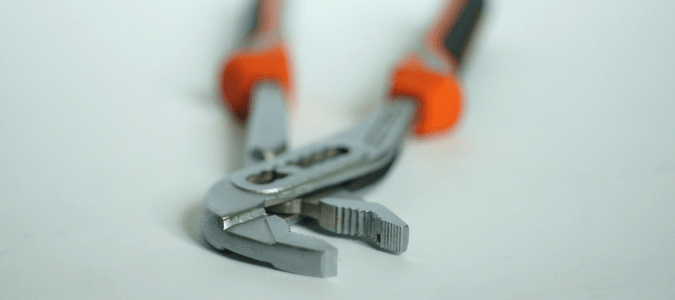
We’ve all been there: something gets dropped down the toilet, your disposal or toilet gets clogged, your bathroom sink gets backed up or the hot water heater starts leaking. Your first thought may be to call a plumber. Immediately, you may find yourself thinking, “That’s expensive. Maybe I can fix it.”
Some plumbing fixes are more difficult than others. If you decide to take on a plumbing repair yourself, you’ll want to make sure you avoid the most common plumbing mistakes so you don’t cause more problems than you solve.
Common Plumbing Mistakes and How to Avoid Them
Before you start looking online for how-to videos, you may wonder which problems you can fix yourself and when to call a plumber. Many home DIY projects can be pretty straightforward—and even satisfying—as you learn something new.
But, then there is plumbing.
How easy is it to fix your own plumbing? Which fixes are manageable for the average homeowner, and what should be left to the pros? Our licensed plumbers share their secrets about some of the disasters they’ve seen in the field when DIY goes awry.
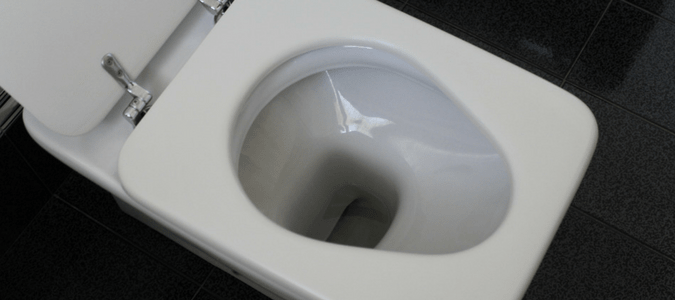
Foreign Object Stuck In Toilet
Toilet clogs can be a homeowner’s biggest headache. No one ever wants what is flushed away to come back up. Remember to not flush paper towels, Kleenex, tampons, condoms, makeup removal pads or hair down the toilet. These items are common culprits for clogged toilets. Excess toilet paper can also be a problem. If you routinely have problems with toilet clogs, consider reducing your toilet paper usage or switching to single-ply. Cleaning the toilet frequently will also help prevent build up.
You may have a situation where little Tommy decides it would be a great idea to stuff one of his toys down the toilet and flush it just to “see what happens.” Your first instinct may be to get out the plunger. However, plunging can make the problem worse by pushing the toy into the waste line. Your DIY efforts could cost you more than if you’d just called the plumber in the first place.
If you want to give it a try, the first thing you’ll want to do is to shut off the water valve. It’s also important to know where the main home shut off valve is in case you need it.
Put down sheeting or towels you don’t necessarily need to use again to catch any water that spills out. Remember some of the water might be dirty as whatever clog which exists comes loose. Start with the plunger if it doesn’t appear that you will push the object further down into the pipe. If that doesn’t work, you’ll need to use a toilet auger.
You may be tempted to use a plumbing snake, but in doing so, you may cause more problems than you solve. Toilet augers are less likely to cause damage than a plumbing snake.
If you decide to try to keep going, you’ll need to put on some gloves. To get started, retract the coil into your auger’s shaft. Next, place the coil head into your toilet bowl, with the coils inside of the drain. Then, rotate the handle to extend the coil down your toilet’s U trap, which is the section of pipe which goes from your toilet bowl out of your toilet and into the sewer pipe.
Continue to crank the handle until the auger is fully extended. You may encounter resistance in the area where the blockage is located. You know the stoppage is cleared once the water begins to drain from the toilet bowl.
Once the blockage is gone, rotate the handle in the opposite direction to bring the coil head out of your U trap and back into the auger. Flush the toilet to make sure your toilet is working normally again. In some cases, you may need to repeat the process of extending the coil head into the U trap two or three times for the blockage to be cleared.
If you decide to remove the toilet, you’ll want to flush the toilet to remove any existing water. Then, remove the bolts at the base of the toilet. Enlist someone to help you lift the toilet off of the ground. Then, use the snake again to get the foreign object out of the bowl. You will need to replace the wax ring with a new one before bolting the toilet back in place.
If you want to avoid the DIY, you can call a professional plumber and they can help you out from the beginning.
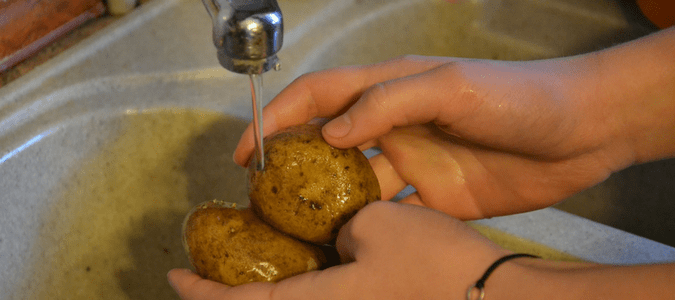
Clogged Garbage Disposal Drain
It can be tempting to scrape all of your leftover food down the disposal or to peel a potato in the sink. It’s called a garbage disposal, shouldn’t food waste go down there? Not always, and it shouldn’t be treated like a garbage can.
Although those tiny little garbage disposal blades can damage your hands or accidentally-dropped spoons, they are not always the best when it comes to some foods or peels which can clog the drain. Large seeds, rinds, bones, corn cobs and other large or dense objects should generally go in the trash and not the disposal.
You’ll know that the garbage disposal flywheel is jammed if it makes a humming noise. If that’s the case, you can try a couple of things. But first, remember you should never put your hands into the disposal.
Take the following steps to try to unclog your disposal drain:
- Turn off the power switch. Even with the power source off, your disposal could be defective. So, don’t put your hands or anything else you don’t want to be chopped up down the drain.
- Sneak a peak. Use a flashlight to see if you can determine if something is keeping the blades from turning.
- Remove foreign objects. If you find something down the drain, use pliers to remove it.
- Wait about 15 minutes. Then turn the power back on, press the reset button and try to use the disposal again.
- Try to manually turn the blades. If the disposal still isn’t working, stick a long dowel rod or wooden spoon into the opening to see if you can manually turn the blades to unstick them. Some disposals come with their own specialized wrench, which you can use if you have one.
- Wait another 15 minutes. If you are successful in moving the blades, wait about 15 minutes before turning the power back on. Then press the reset button and recheck.
If that still doesn’t work, you should consider calling a plumber. A leaking garbage disposal is a sign you may have a bigger problem. A licensed plumber can assess the problem. It could be the rings around the drain hole, a hole in the casing, faulty plumber’s putty or a bad dishwasher connection. You’ll want to call before your leak gets even worse.
If your disposal is slow to drain, your pipes may be clogged. Harsh drain cleaner chemicals aren’t a good idea to use in your garbage disposal. An skilled plumber has the experience and tools to take your disposal apart and see where the problem is.
What if your disposal just stinks, but you can still hear it running when you turn it on? That can be an indication that even though the motor works, the blades are still stuck. You can try the lemon trick by feeding small cut up lemons down the disposal and see if the smell goes away. If the smell keeps returning, you probably need a new disposal.
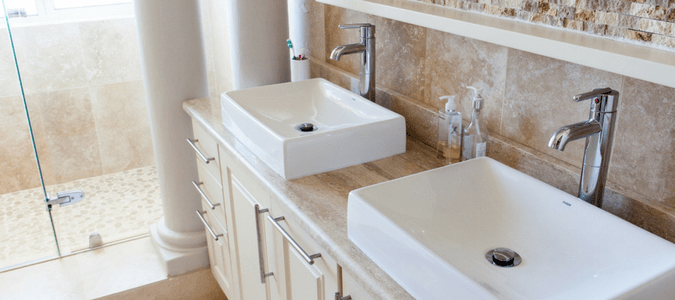
Bathroom Sink Problems
Inevitably bathroom sinks clog or drain slowly. Most of the time it’s because of soap build-up or hair getting stuck in the drain. These bathroom sink problems can cause a mess and lead to the sink overflowing.
Typical DIY methods involve removing the stopper either with your hand or with pliers. If there is a pivot rod, you need to remove that as well. Most likely the clog is hair stuck on the stopper or rod which can be removed and cleaned.
Once the pivot rod is out, you need to take a bent wire hanger or small rod to try and snake out the clog. Beware that you can make matters worse by pushing the clog further down the drain. If you don’t have the proper plumbing tools, this can easily happen. Any time you use need a plumber snake, keep in mind that a professional is best equipped to handle the tool and the job.
You may also be tempted to use a drain cleaner. However, these tend to be mostly ineffective at removing the clog completely. In addition, drain cleaners create heat with a chemical reaction which can corrode your pipes. The harsh chemicals can also be hazardous to your health, as well as children and pets.
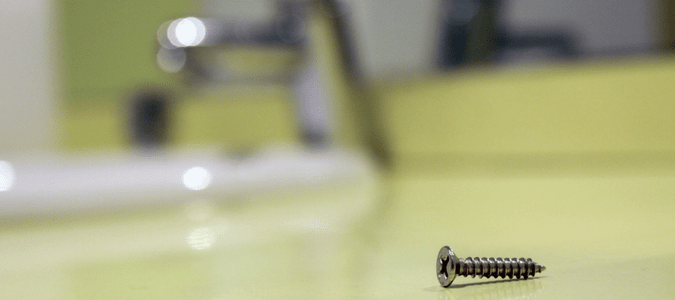
Galvanic Corrosion
One of the biggest mistakes that novice plumbers can make is connecting two different metals together in the presence of an electrolyte, such as water. When this happens, it forms a reaction called galvanic corrosion.
The corrosion can build up and close the pipe. In these cases, you’ll need to use a dielectric union, which is a special coupling that acts as a barrier between the two different types of metals. This is an inexpensive purchase that can save lots of money in the long run.
Some plumbers don’t like dielectric unions, but they are part of the standard plumbing code. Yes, they can be a source of leaks, and corrosion can occur with a hot water heater. But since these parts are part of the standard plumbing code, they are required to pass inspections.
ABC Can Help You Avoid Plumbing Mistakes
When you encounter a plumbing problem in your home, it can be tempting to try to fix it yourself. What first appears to be a minor problem can turn into a major inconvenience if you make a mistake. Don’t run the risk of accidentally causing more damage. Trust the licensed and highly experienced plumbers at ABC Home & Commercial Services. Whether you have a clogged disposal, toilet, sink or other plumbing problem, you can count on us for dependable plumbing service, repair and installation.
